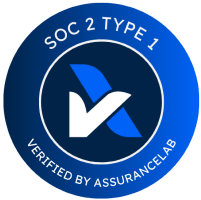In today's data-driven world, organizations need to harness advanced analytics to stay competitive. ClickHouse, a high-performance columnar database management system, enables rapid data processing and complex analytics. This guide will walk you through real-time data migration from MySQL, Oracle, or MongoDB to ClickHouse using Tapdata, alongside best practices for building an effective data pipeline.
Why Migrate data to ClickHouse?
Migrating your data to ClickHouse can be transformative. Here are several key advantages:
1. High Query Performance
ClickHouse is designed for large datasets with minimal latency. Its columnar storage model allows for rapid access to specific data segments, significantly improving query speeds, especially for analytical workloads that require aggregations and complex calculations.
2. Efficient Data Compression
ClickHouse employs advanced compression techniques, reducing the storage footprint of your data. This efficiency not only saves costs but also enhances query performance, as less data needs to be scanned.
3. Real-Time Analytics
With ClickHouse, businesses can perform real-time data analysis. Its ability to ingest data rapidly while allowing simultaneous queries means you can gain insights as data arrives, enabling timely decision-making.
4. Scalability
ClickHouse supports horizontal scaling, allowing you to distribute your data across multiple nodes easily. This feature ensures that as your data volume grows, your analytical capabilities can grow with it without performance degradation.
5. SQL Support
ClickHouse offers robust SQL support, enabling users with existing SQL knowledge to interact with the database seamlessly. This compatibility reduces the learning curve and allows teams to leverage their existing skills.
How to Migrate data to ClickHouse?
Migrating data from MySQL, Oracle, or MongoDB to ClickHouse doesn’t need to be complex. Tapdata offers a streamlined process to handle real-time data replication with accuracy and efficiency.
Tapdata is the industry's best Data-as-a-Service platform built on a real-time data exchange platform focusing on heterogeneous data replication,processing and servicing.It enables fast connectivity across various data silos within an enterprise through a code-free approach. It collects data in real-time into a central data platform and employs master data management techniques to establish comprehensive,accurate,trustworthy,and reusable data models for downstream data applications,providing them with fresh and realtime data.
Empower Your Data Journey with TapData, Key Features:
-
Seamless Integration: Connect diverse data sources effortlessly.
-
Real-Time Synchronization: Keep your data accurate and up-to-date.
-
Automation for Efficiency: Minimize errors and save time with automated workflows.
Key Steps in Real-Time Replication with Using Tapdata
Step 1: Connect Your Source and MySQL Database
Begin by establishing a connection between Tapdata and your source database (MySQL, Sql Server or Oracle etc..):
-
Configure Connections: In the Tapdata interface, create a new connection by specifying the database hostname, port, and authentication details. Ensure that the connection is secure and stable.



-
Test the Connection and Save: Before proceeding, test the connection to confirm that Tapdata can effectively communicate with your source database.

Step 2: Connect with Your Target ClickHouse Database
-
Configure Connections: In the Tapdata interface, create a new connection by specifying the database hostname, port, and authentication details. Ensure that the connection is secure and stable.

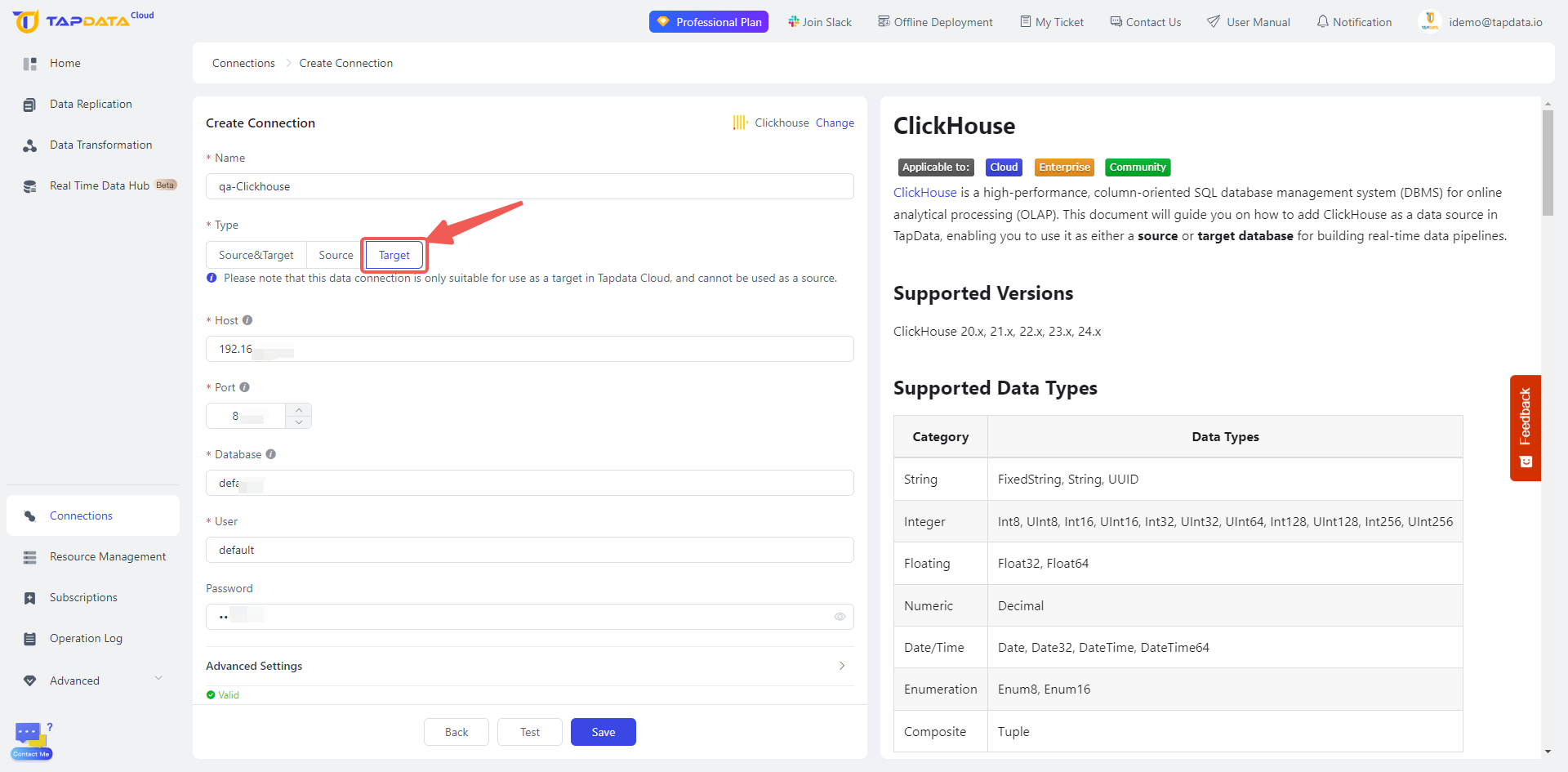
-
Test the Connection and Save: Before proceeding, test the connection to confirm that Tapdata can effectively communicate with your source database.
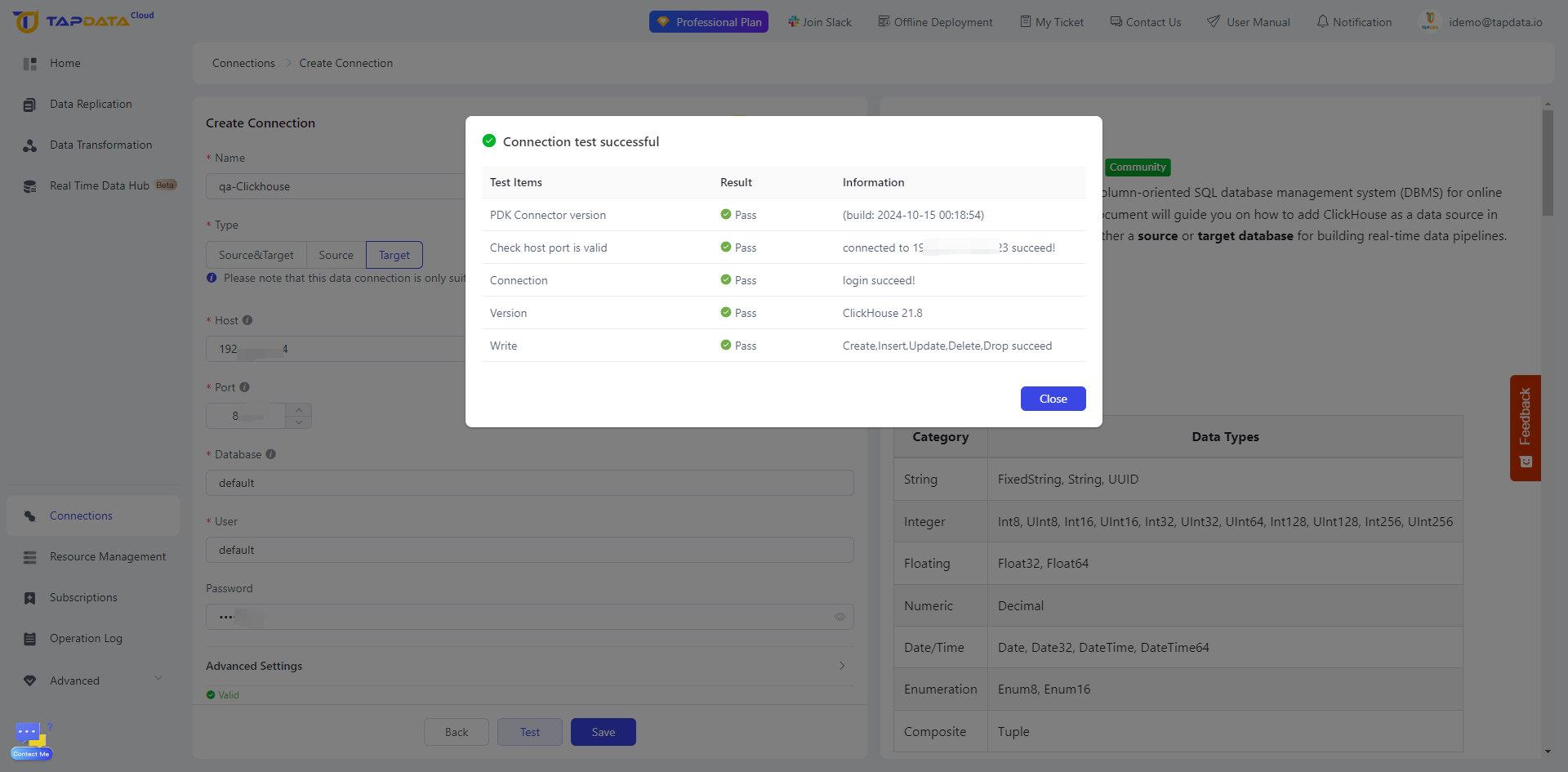
Step 3: Build the Data Pipeline for Real-Time Replication
Now, set up your data pipeline for real-time data migration:
3.1 Go to Data Replication Section and click on create button:
-
Navigate to the Data Replication section.

3.2 Drag and Drop Database Nodes:
-
On the canvas page, drag and drop the MySQL and ClickHouse database nodes.
-
Position the MySQL node on the left side and the ClickHouse node on the right side.

3.3 Configure MySQL Node:
-
Click on the MySQL node and select the desired tables you want to replicate to ClickHouse in real time.

3.4 Adjust Settings for Synchronization:
-
Click on the settings of the MySQL node and select the Full + Incremental Sync option to ensure first replicate existing data and after full sync automatically start capturing incremental or cdc data.

3.5 Configure ClickHouse Node:
-
Click on the ClickHouse node, then save the pipeline with the default configuration and start it

3.6 Monitor Replication:
-
After starting, you will be directed to the Monitoring Page where you can track the replication status and verify that data is being replicated successfully.
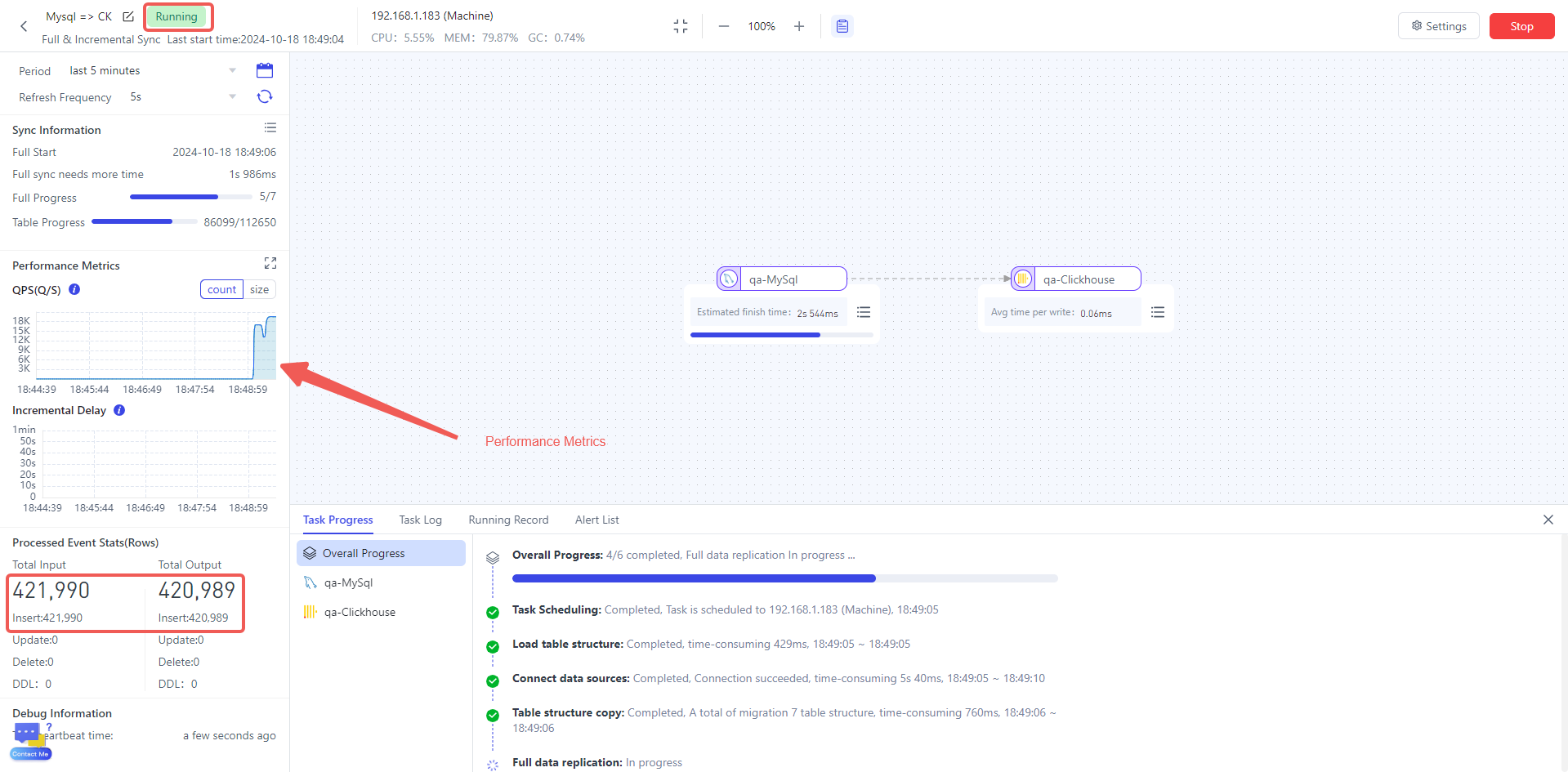
Now, we have created a real-time pipeline from MySQL to ClickHouse. Every change in MySQL will update in ClickHouse in just a sub seconds.
Step 4: Connecting ClickHouse with Metabase
To visualize your data in ClickHouse using Metabase for real-time analytics, follow these steps:
Step 4.1: Connect Metabase to ClickHouse
-
Launch Metabase: Open your Metabase application.
-
Add a New Database: Navigate to the “Admin” panel and select “Databases.” Click on “Add a database.”
-
Configure Database Connection:
-
Database type: Select "ClickHouse."
-
Name: Provide a name for your database connection.
-
Host: Enter the ClickHouse server hostname or IP address.
-
Port: Enter the port number (default is usually 8123).
-
Database name: Specify the name of the database you want to connect to.
-
Usename and Password: Provide the necessary authentication details.
-

-
Save the Connection: After entering all the details, click on “Save.”
Step 4.2: Create a question for the Dashboard
Click on the "New" Button and from the dropdown menu, choose "Native query." This option allows you to write your SQL queries directly.
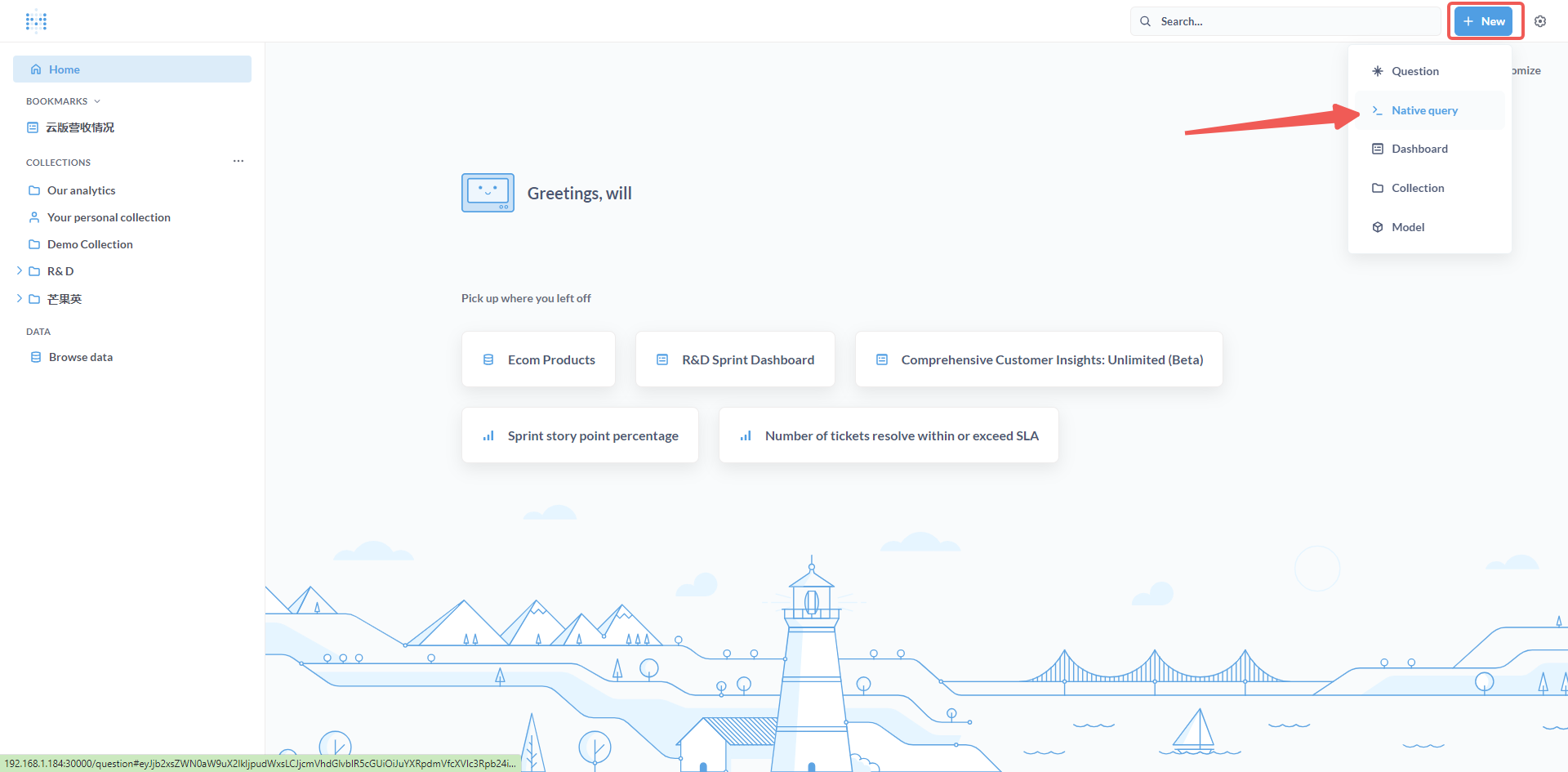
4.3 Choose the ClickHouse database from the list of available databases. This will ensure that your query runs against the correct data source.
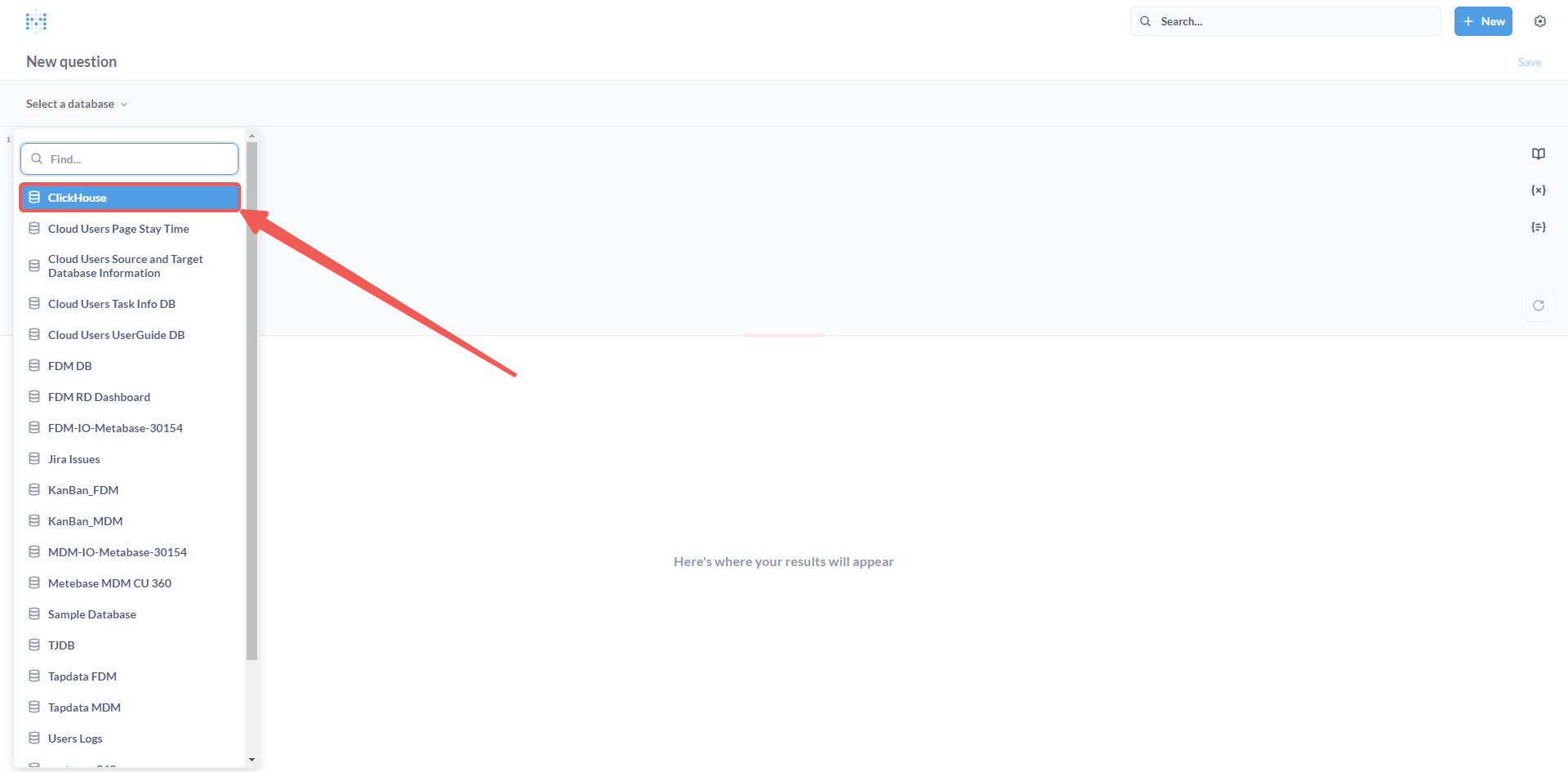
4.4 In the query editor, type your SQL query to retrieve the data you need. For example, to count the number of orders by status, you might use: Click on the "Run" button (or "Execute") to run your query and see the results in a table format.

4.5 Click on the visualization options (chart icon) located at the top of the results panel.

4.6 Choose "Pie chart" from the visualization types. Once you're satisfied with the pie chart, click the "Save" button.

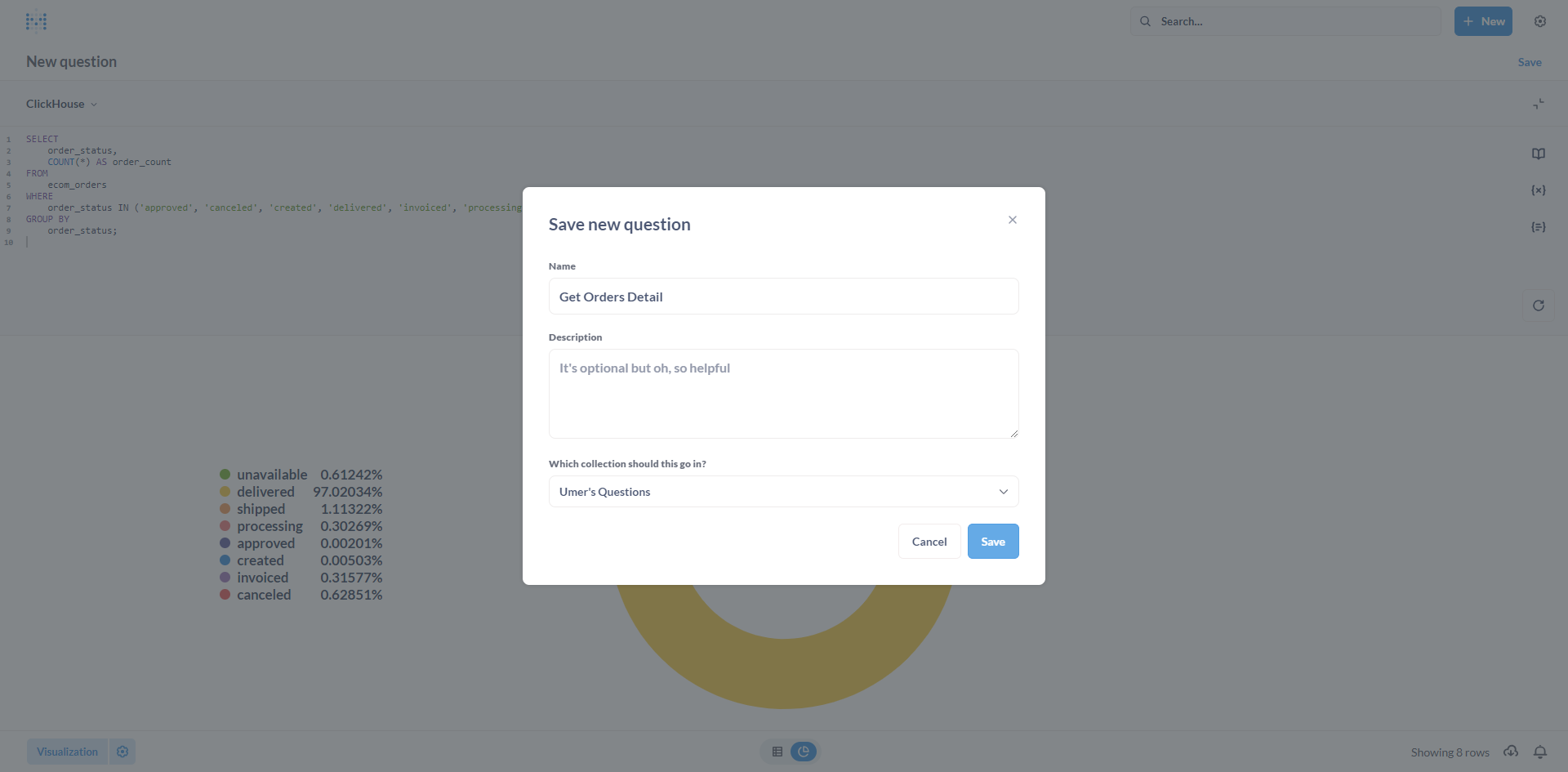
4.7 Add a New Dashboard: From the Metabase home page, click on “New Dashboard” and give it a name.

4.8 Add question which we created in the last steps

Save the dashboard with question we added

Conclusion
Migrating your data to ClickHouse using Tapdata presents an incredible opportunity for organizations to enhance their data processing capabilities. With ClickHouse's high query performance, efficient data compression, and real-time analytics features, businesses can gain valuable insights faster than ever. The step-by-step guide provided here illustrates how to establish robust data pipelines and integrate ClickHouse with Metabase for powerful data visualization.
By implementing these practices, organizations not only streamline their data operations but also empower their teams to make data-driven decisions with confidence. In an era where data is a critical asset, leveraging ClickHouse can be a game changer for any business seeking a competitive edge.
Embrace the power of ClickHouse, and lead with data-driven confidence.
Discover how to migrate data from MySQL to ClickHouse with TapData today! 👉 Learn More | Request a Demo | Contact Us

